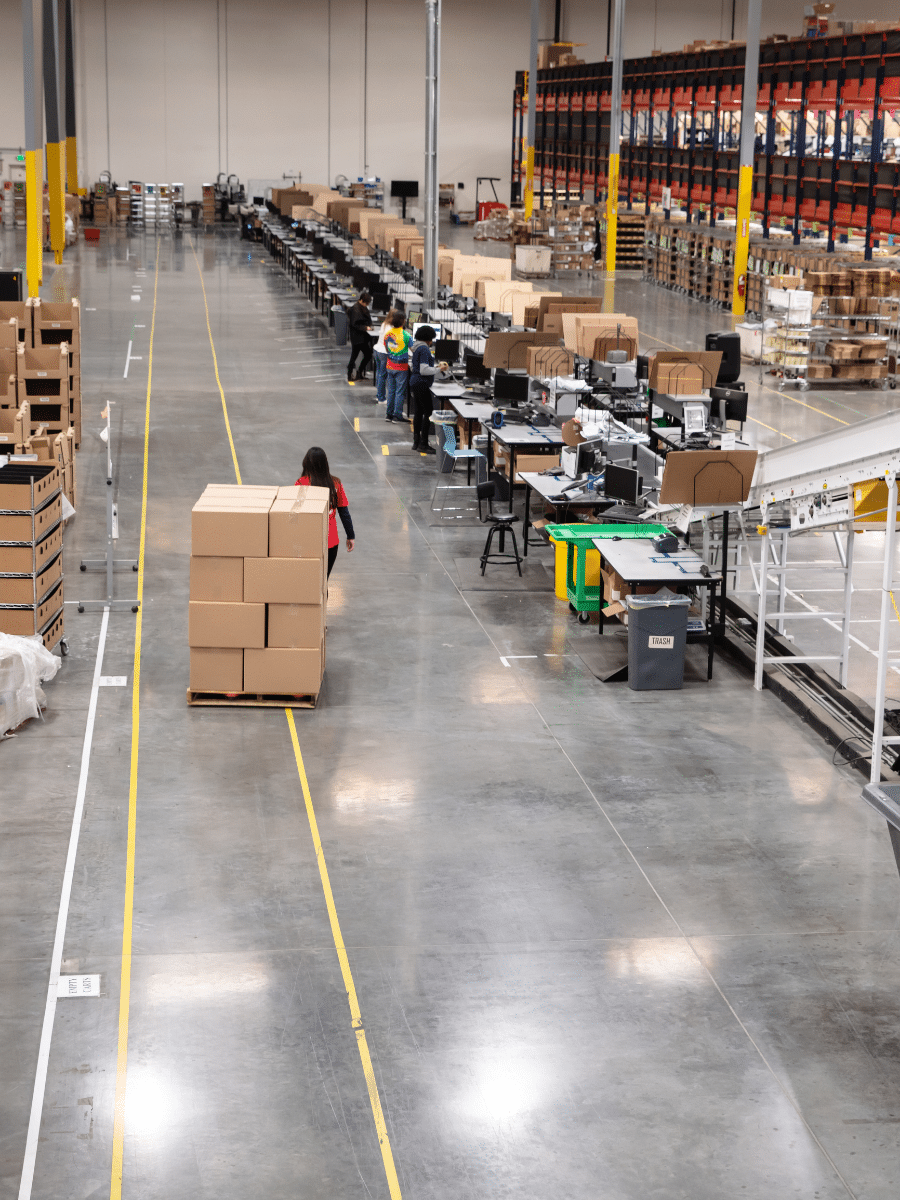Through Predictive Analytics
Driving Warehouse Efficiency Through Predictive Analytics
The rise of technology has ushered in a deluge of information, driving companies into a period where each choice, plan, and result can be scrutinised through the prism of data evaluation. The warehousing and supply chain sectors, seen as the heartbeat of worldwide trade, are on the brink of a significant metamorphosis.
In an environment where even the smallest moments can tilt the scales of success and setback, the ability to anticipate what lies ahead is a priceless advantage.
Predictive analytics promises not just foresight but a blueprint for unparalleled efficiency and strategic foresight. Before delving into its applications in the warehousing realm, it’s pivotal to understand that predictive analytics doesn’t merely represent a technological shift; it embodies a paradigm shift in how we approach challenges, anticipate trends, and shape solutions.
So, how does this potent blend of data science and industry expertise promise to rewrite the rules of warehousing?
The Power of Predictive Analytics
Building upon the foundation established by the digital age, predictive analytics is far more than just number crunching. It amalgamates historical data with sophisticated algorithms to offer actionable insights. This proactive approach, a shift from traditional reactive methods, allows businesses to chart a course that’s not based on mere guesswork but on data-driven intelligence. In the warehousing world, where complexity reigns supreme, this approach offers a streamlined, data-led path, ensuring no decision is left to chance.
Demand Forecasting
Every decision made within the warehousing sector pivots on one essential factor: understanding demand. Fundamentally, demand forecasting blends creativity and systematic analysis to anticipate future product needs, enabling companies to tailor and fine-tune their plans in response. In traditional settings, this process has often relied on historical sales data, intuitive hunches, and rudimentary trends. However, in our dynamic market landscape where consumer behaviours shift rapidly and external factors like global events and economic fluctuations can exert sudden pressures, these old-school methods often fall short.
When viewed through a modern perspective, demand forecasting is intricate. It doesn’t solely rely on historical sales figures but incorporates elements like advertising schedules, market movements, competitor actions, and overarching cultural changes. For example, the uptick in online commerce or an international incident such as a health crisis can notably sway consumer choices, resulting in distinct spikes or dips in demand.
Enter Predictive Analytics
This is the juncture where predictive analytics steps into the limelight. Instead of solely relying on linear historical trends, predictive analytics employs advanced algorithms and machine learning to mine deeper insights from vast datasets. It merges internal data (like past sales and stock levels) with external data sources (like social media trends, economic indicators, and geopolitical events) to create a holistic forecast model.
For warehouses, the beauty of such a nuanced approach is twofold. First, it allows them to proactively adjust inventory levels, ensuring they neither overstock with products that gather dust on shelves nor understock and face the ire of disappointed customers. Second, it provides strategic insights for procurement, allowing businesses to negotiate better deals with suppliers based on anticipated demand.
In essence, modern demand forecasting, powered by predictive analytics, transforms the warehousing industry from a reactive entity, always playing catch-up with market demands, to a proactive powerhouse, always a step ahead and ready to seize opportunities or mitigate challenges.
Inventory Management
Warehouses are vast ecosystems where every inch of space and every item matters. Inefficient inventory management can be the silent profit killer, tying up capital and increasing holding costs.
Predictive analytics tackles this by providing insights into product turnover rates, identifying patterns in sales, and even forecasting product lifecycle stages. By leveraging these insights, warehouses can ensure they’re stocking just what they need, precisely when they need it, avoiding both overstock and stockouts.
Maintenance Scheduling
Warehouses run on a complex mesh of machinery and technology. A single unexpected breakdown can ripple into significant operational delays. Traditional maintenance often follows a calendar-based approach, which can be both inefficient and risky.
With predictive analytics, however, maintenance becomes a dynamic process. By continually analysing data from equipment sensors and juxtaposing it with historical breakdown patterns, predictive models can provide a near-accurate window into when a piece of equipment might falter. This proactive approach ensures machinery is serviced just in time, promoting longevity and reducing unplanned downtimes.
The Human Element
Apart from equipment and items, a warehouse’s true strength lies in its people. Gaps in staffing or operational inefficiencies can severely impede workflow.
Predictive analysis steps in as a powerful tool in this realm as well. By delving into past workflow patterns, it can anticipate peak times, guaranteeing that staff planning matches the anticipated demand. This approach not only trims staffing expenses but also guarantees optimal personnel deployment, boosting team spirit and efficiency.
The Big Picture
At its core, warehousing resembles a jigsaw with numerous dynamic elements. Each component, whether it’s demand prediction, stock control, equipment upkeep, or staff organisation, is vital. However, it’s the overarching perspective that genuinely enhances productivity.
By weaving predictive analysis into these areas, those overseeing warehouses can attain a full-circle grasp on their operations. This all-encompassing view aids in pinpointing possible hindrances, lapses, and prospects, guaranteeing that choices are well-thought- out, data-driven, and in sync with the broader business goals.
In Conclusion
Traversing the maze of today’s warehouse functions, it’s evident that predictive analysis goes beyond being mere industry jargon—it’s a game-changing instrument. From refining demand predictions, streamlining stock levels, anticipating equipment issues, to workforce coordination, its uses are broad and striking.
The main insight is straightforward: in a time characterised by vast amounts of information, those in the warehousing and logistical realm who utilise predictive analysis stand a chance not just to anticipate what’s next but to steer it favourably. The next phase in warehousing isn’t solely about holding goods; it’s about capturing knowledge and leveraging it proficiently.



